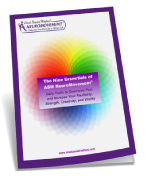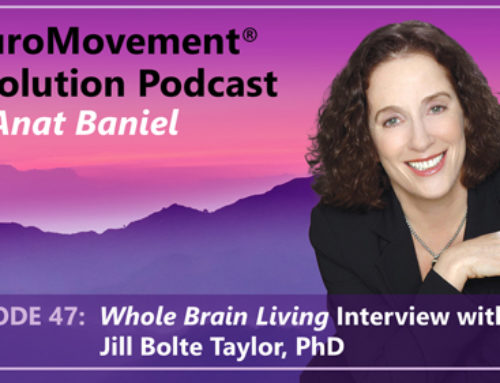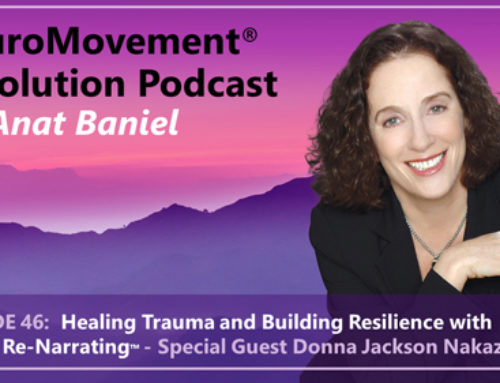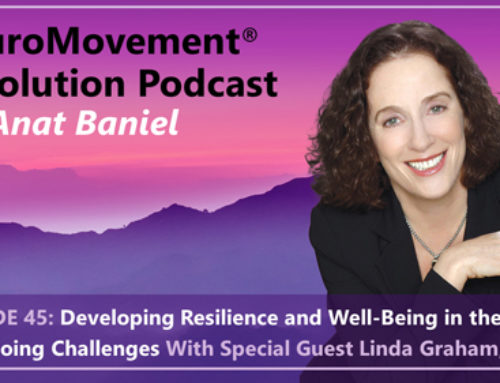Scoliosis: Go With the Curve
How You Can Increase Your Flexibility and Strength and Reduce Pain Through Brain Change
Saturday, June 29, 2013, was the first International Scoliosis Awareness Day. It’s a day to “create positive, public awareness about scoliosis, promote education, advocacy campaigns, and bring people together with the condition.” In honor of this day, I’d like to share with you new possibilities for breakthrough improvements in mobility, strength, balance, breathing and pain relief for people with scoliosis that are based in the capacity of the brain to change itself and create new patterns and freedom of movement despite the curvature.
You don’t need a straight spine to have a healthy, flexible and powerful back.
A healthy spine can move in all directions: It can twist, bend forward, backward and sideways and any combination of these four directions. When in action, the spine repeatedly twists and curves, moving in and out of the midline. With scoliosis, the spine has some degree of fixed curvature and as a result never moves fully back to the midline.
It is natural to want to straighten the spine. Many techniques, from exercise to braces and even surgery, attempt to reduce the curvature as much as possible, often with limited success. However, you do not need to have a straight spine to have a functionally healthy spine, in my opinion. What you need is the ability to move your spine in all directions with ease and dexterity. And that is possible to achieve, I believe, also when there is scoliosis.
The Brain Organizes All Movement
If we only focus on the structural aspect of scoliosis, we have no choice but to try and “fix” the structure and have it define what we can or cannot do. However, the moment we realize that it is the brain that organizes all movement, that it is an information system and that the brain can change itself throughout life, we can look to provide the brain with new and relevant information with which to form new connections and patterns and create exciting new possibilities for us. In other words, the structural limitations needn’t create nearly the typical functional challenges that many of those suffering from scoliosis experience.
Five Ways To Inform Your Brain and Increase Your Mobility and Well-Being
Before doing the suggested movement exercises below, make sure to get the approval of your health care provider. Make sure to do the movements slowly and gently, no more than 10-20 minutes twice a day. If you experience pain doing any of the movements, stop doing that movement.
1. Move your spine in all directions.
Rather than focusing on trying to have a straight or a straighter spine, instead focus on moving your back in many different directions in space. It’s important you do small and very gentle movements for effective and rapid brain change. You can use your imagination to visualize the movement if trying to do it is presently difficult.
2. Go with the curve.
For a curve to form in the spine, the muscles on one side of the spine need to continuously contract more powerfully than on the other side. Many try to stretch the spine, but that only pulls on the short muscles, which in turn gets them to contract even more due to the stretch reflex. It is your brain that needs to tell these muscles to let go. To help the brain feel the imbalance, instead of trying to “fight” what its doing, gently move your spine more in the direction of your curvature, e.g., gently increase the curvature—yes, you read this right. Then gently and slowly let go and see whether your spine, spontaneously, feels the sensation of growing longer.
3. Twist, don’t straighten, your spine.
If you had a chain lying on the ground in an S shape and you gently and gradually twisted the two ends in opposite directions, after a while that chain would begin to straighten. You can do the same with your spine. Preferably while lying down on your comfortable side, but also in sitting or even in standing, gently twist your back and spine in the direction that is the easier one for you, then come back. After you repeat this movement a few times, notice whether your back begins to move more easily and your spine feels it is getting longer. (How much depends on already existing structural changes.)
4. From asymmetry to symmetry.
To help correct asymmetry, it’s important you do your exercises asymmetrically. This helps your brain (i.e., you) feel when you are off the midline and self correct. First do the movements on the side and to the direction that is easier and don’t do the other side right away. It might feel a bit strange in the beginning, but after a while you may start noticing increased mobility and comfort in your back and your whole body that might surprise you.
5. Your back is not alone.
Your brain organizes your whole body—your muscles, joints and skeleton—to function successfully with the curved spine the way it is. In order to improve the mobility in your spine and maintain the improvements, its important that you also focus on, and move in new ways, not just your back, but also your legs, arms, head, and pelvis.
Additional Resources
To find out why it’s important to move gently and slowly to induce positive brain/body change, you can read about the Nine Essentials.
To learn more about the NeuroMovement® approach of the Anat Baniel Method®, read the article “Movement and Learning Based-Approach to Working with Scoliosis.”
Please share this information with others!





